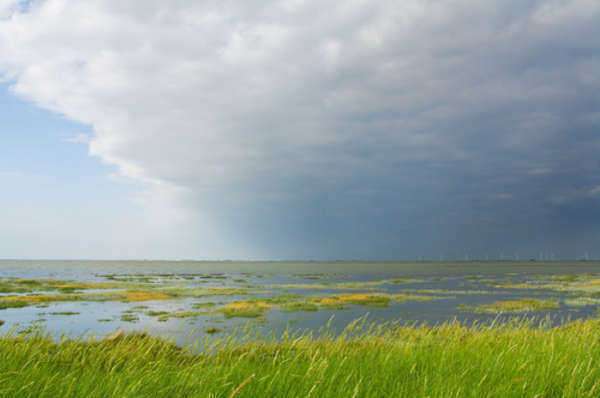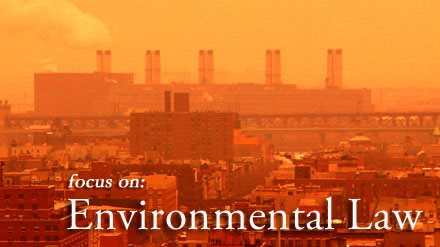Logging Defined


 Environmental law background
Environmental law background




In environmental law, nuisance applies to a party’s inability to allow the other party’s ability to enjoy the land on which they reside. The civil action of nuisance in application to environmental law is not necessarily contingent upon injury, it could simply constitute annoyance, welfare, health, or convenience.
Nuisance suits, in environmental law, pertain mostly to practices and property uses that encroach upon a neighbors right to enjoy their own property. The nuisance must constitute an unreasonable and objectionable public or private use of one’s land to the detriment of another’s. In environmental law, many public nuisances are considered crimes. Private nuisances make similar allegations; however, they more often involve civil court actions.
In application to environmental law. Two parallel scenarios will illustrate the concepts of private nuisance versus public nuisance. Environmental violators that are guilty of public nuisance in a civil court proceeding conduct lawful business in accordance with local zoning, health board, and environmental statutes. For example, many cities have a butcher district. The area is specifically zoned for that type of business.
However, many people live near that district but outside of that urban district. A slaughterhouse dumps its scraps lawfully in the dumpster outside but fails to keep the dumpster lid closed. The entire neighborhood smells of rotting meat scraps. Residential neighbors complain about the awful stench.
The slaughterhouse refuses to close the lid on the dumpster. The residential neighbors can sue the slaughterhouse for failure to make a reasonable request to curb the stench by closing the dumpster lid. This is an example of a private nuisance. The slaughterhouse is not guilty of violating public environmental law. However, the slaughterhouse still guilty of impeding on the residential neighbors’ right to be free from an unreasonably bad smell. Therefore, this example fall under private nuisance.
Keeping with the theme of slaughterhouses, an example of a private nuisance in violation of environmental law willed be forged. A slaughterhouse conducts its business in a lawfully zoned area. It has all its credentials and acts in accordance with the law. However, its business practices violate public environmental law by dumping meat scraps and blood in the canal near the back lot of the facility. Part of that canal lies on the facility’s property.
The canal empties out to a beach resort on the coast. Beach goers have noticed an unusually high amount of sharks in the waters. Fortunately, no one has been injured; However, word travels and shark infested waters are bad for business.
The beach resort has reason to suspect that it may be the blood that is attracting the sharks to the waters, threatening the livelihood of the private beach goers. The violation of environmental law is first reported as a private nuisance.
Upon investigation, it becomes a public nuisance because the state has a statute against dumping food scraps into the canal, especially blood. The beach resort can still bring civil action. However, the owner of the slaughterhouse is criminally liable for his violation of environmental law because it violates the public safety.

In environmental law, common law actions may be brought against any entity that acts irresponsibly against the environment. Sometimes the concept of personal property and the right to use property however way one wants is in conflict with the interests of the environment and all the beings that inhabit the environment.
Organizations advocate for environmental safety on behalf of animals, humans, and the sustainability of every ecosystem on Earth. Civil disputes in regards to environmental law can be brought at the instant that someone acts negligently in any capacity to the detrimental of anyone or anything in the environment. Plants and animals do not have standing in court because they cannot speak.
Unfortunately, many common law actions concerning environmental law are brought to court after wrong has been done. Fortunately, the wrongs that are done against the environment do not have to result in injury to be resolved in a court of law. Types of common law actions depend on who is responsible and the extent of the harm or wrongdoing.
Nuisance
Nuisance is the use of personal, corporate, or public property to the detriment of a neighboring property holder. Nuisance suits come in two different types: public or private. The type of nuisance suit is structured on the extent to which one’s use of property threatens the enjoyment of other parties’ property.
Public nuisances often criminally violate environmental law. Criminal as well civil proceedings may result from public nuisance suits initiated by public or private entities. Since environmental crimes are typically of a public nature, public nuisances can become criminal cases. The states can sue corporations that violate environmental law as well. Private nuisances usually involve no statutory offenses.
However, the lawful use of one’s property can inflict harm upon someone else’s property. To file either a public or private nuisance suit, physical injury or damage does not have to be reported. Nuisances are brought if the one’s annoying use of property has not yet done harm or is just plain annoying.
Negligence & Strict Liability
“Tort” is nothing more than a fancy word for a personal wrongdoing. In civil litigation, including environmental civil litigation, there are two types of tort. There must be some form of physical injury or harm done as a result of someone’s disregard or irresponsibility. In environmental law, there must be some form of harm done to the environment whose negligible actions ruined the livelihood of another party.
Everyone is dependent on the environment; therefore, it is inevitable that an irresponsible act against the environment will result losses of another party. A tort of negligence makes the claim that an individual or corporation’s is solely responsible for the injury or harm that brought the dispute to civil court.
A tort of strict liability concentrates culpability to a third party. For example, when an oil tanker ship leaks oil and destroys the beach tourism and the coastal habitat, if it can be proven or is suspected that the ship’s rivets on the hull were defective and would reasonably sustain the type of blow that ruptured the hull on the tanker, then the manufacturer of the rivets is responsible.
The liability for the environmental injury no longer lies on the captain of the ship or the shipping company, it lies on the maker of the defective rivet. These two types of torts are not often clear-cut ultimate responsibility is revealed upon the facts that are revealed as a result of the court proceedings. There are monetary damage caps for both types of torts. Maximum damages that could be won on behalf of the plaintiff is contingent upon the type of tort brought before the civil court of law.

Environmental law covers a myriad of topics that involve the protection of the environment. Environmental law also encompasses avenues of legal recourse through which victims of environmental disasters can go.
Environmental law has has state, local, and federal provisions that are designed to ensure a livable quality of air and water. Most environmental laws target businesses who are guilty of contributing to the pollution of the air and water.
Such regulatory action is justified when certain environmental pollutants have been linked to extinction of wildlife and to the increased toxicity of the human body. As a result of environmental pollution, particularly water pollution, pregnant mothers have been warned not to eat fish because the mercury in the fish poses a threat to the development of a healthy baby.
The Environmental Protection Agency is the federal watchdog for the environmental mismanagement of irresponsible business who dump toxins into the water or Air. The EPA has the authority to arrest and fine violators of the Clean Air Act or the Clean Water Act. Knowing environmental law is crucial to operating a business because the effects of pollution are becoming increasingly prominent in today’s world.

Water is one of the most important resources on Earth. Over 70% of the Earth’s surface is water. It considered a renewable resource. However, water has another major property, many dangerous chemicals can be dissolved into water. The dumping of refuse was common throughout human history. Before, the Industrialization is was common to through food scraps and waste into the river or other body of water.
Nature could handle that kind of pollution and that type of pollution did not have much of an adverse effect on life in the rivers. During the Industrial Revolution and well into the 20th and 21st century, mass production created amounts of toxic by-products that could no longer be effectively absorbed through nature’s natural purification process. The toxicity of water climbed to unsustainable levels that longer supported life. If life still existed in polluted waters, living things would be subject to illness, infertility, or genetic malformation. Something had to be done.
The United States Congress passed several measures at the turn of the 20th century that governed methods of dumping water. However, many of these laws were not enforced and lacked the regulatory capacity to ensure that businesses were following the rules. By the 1970s, Congress had passed landmark legislation that ushered in the modern system of water pollution mitigation. The Clean Water Act was the landmark legislation that had the regulatory teeth that previous statutes lacked.
Navigable Waters
This is a term that is repeated throughout the Clean Water Act. According to the Statute’s language, “Navigable Waters” means water that has significant nexus to water that can accommodate vessels or swimming. “Significant nexus” is legal parlance that describes bodies of water with significant connections to larger bodies of water that allow for swimming or boats. This inexact phrasing was intended to broadly define the bodies of water that were covered under the Clean Water Act.
The idea behind such awkward phrasing was to define bodies of water subject to regulation as anything that was not a puddle in a driveway. In 2006, this part of the Clean Water Act was challenged in the Supreme Court case of Rapanos v. United States. The Court clarified the definition to narrow the scope of the law. Navigable waters was limited to only include lakes, rivers, streams, tributaries, and other recognizable geographic formations pertaining to water.
Standards for Equipment
The EPA reserves the right to mandate that polluting companies seeking to dump their waste into a body of water must first purify the water with the best possible equipment. Polluting industries must either use their own waste management equipment that is specifically sanctioned as the best by the EPA or send their waste-water to the the municipal or county water treatment facility.
The Clean Water Act appropriates funds to local governments so that they can build their own water treatment facilities to reduce water pollution. If polluting industries choose to use the government facilities, they may transport the waste-water in EPA approved containers. They must also clean out the tanks in an EPA sanctioned manner as well.
Clean Water Act & Its Amendments
The Clean Water Act is what made any government measures to regulate water pollution feasible. The act contains language that grants the Environmental Protection Agency the authority to enforce the Clean Water Act. The Clean Water Act uses a combined strategy of regulatory and non-regulatory measures to ensure the safety of surface water.
The Clean Water Act does not cover ground water. The Clean Water Act covers all bodies of water that are navigable or connected to navigable waters. The act does not cover isolated and impermanent bodies of water. Therefore, the ability to bump waste into most bodies of water requires a permit. The approach to enforcing the Clean Water Act is based on maintaining water pollution at acceptable levels.
The Act also helps state and local governments deal with their local water pollution problems through waste-water exchange programs and encouraging the local enforcement of the act. The Act was amended twice in its history: in 1977 and 1987. The Clean water Act was amended to include provisions to maintain acceptable water quality for swimming and recreation.
Wetlands
Wetlands were historically subject to much environmental abuse due to water pollution as a result of industries and businesses dumping waste-water in swamps and marshes. Wetlands were an under-appreciated geographic formation because they were mosquito infested and did not smell well. However, it was later revealed that Wetlands and the animals that inhabit them are equally as important as any other part of Earth.
Wetlands were included in the original Clean Water Act. However, the lack of appreciation for wetlands gave little cause for water pollution enforcement. Places like the Florida Everglades have lay in waste as a result of years of water pollution. Alligators were beginning to die.
The Army Corps of Engineers intervened through its program of dredging an flood control to rebuild the Florida wetlands. Many other major swamp regions have become conservation areas whose wildlife is to be respected. Polluting the water on wetlands is illegal as long as the wetlands is connected to major body of water.
Violations of the Clean Water Act
Violating the Clean Water Act has serious consequences. Violations do not only result in slap-on-the-wrist fines and possible jail time, they result in injury. Water pollution violations all over the United States have resulted in irreparable harm done to humans as well as countless species of animals. Polluted drinking water has been the cause of several chronic illnesses that are associated with a given region.
Industrial water pollution has also been implicated in the malformation of amphibians. Doctors warn pregnant mothers to avoid eating fish because the mercury content can harm the development of fetuses. Violating the Clean Water Act is more than just a fine, it is the immoral act of ruining the health and potential of fellow living things.
Violating this act is to be avoided because it is a moral obligation to keep the waters as clean as possible because all life on earth is interrelated and pollution travels throughout the earth.
 Each state will prove to have its own regulations and laws in
Each state will prove to have its own regulations and laws in
regards to trash removal or disposal. These laws can range in terms of
the specific aspects they are applied toward, though they will usually
stem from the basic concept of making trash removal a more efficient
and simpler process.